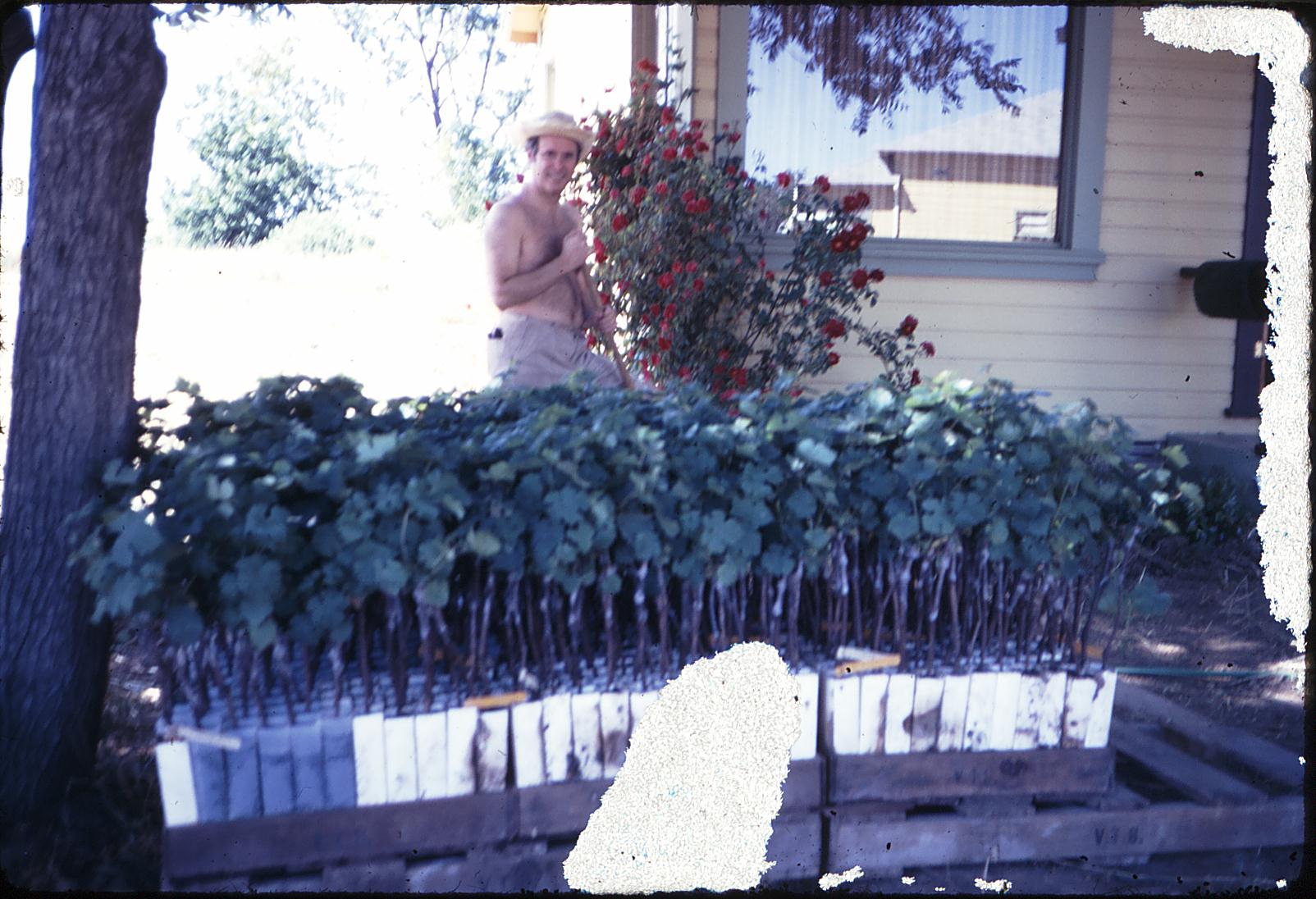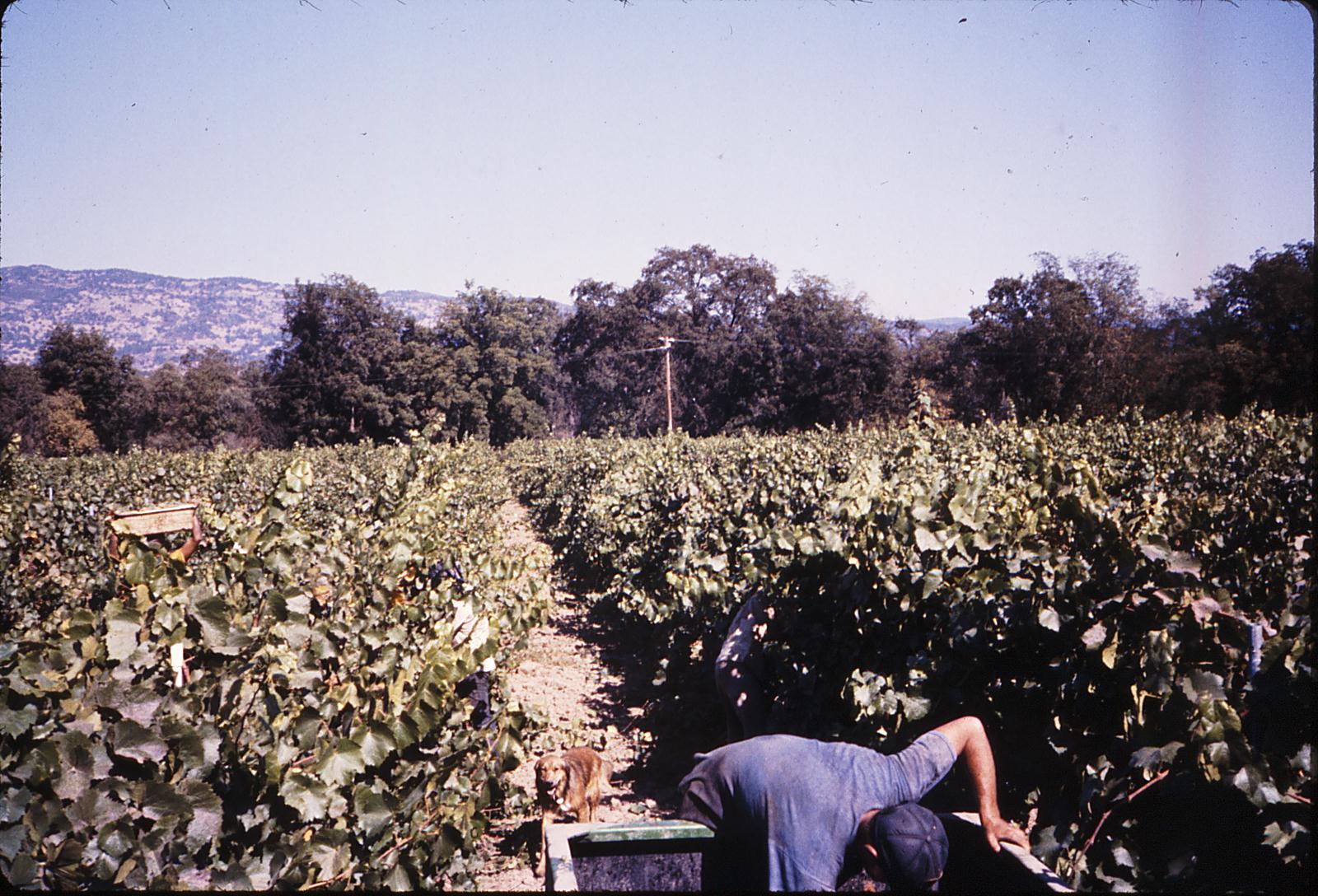Summer Solstice
Summer Solstice coincided with Fathers Day this year, and we enjoyed the late sunset at the end of a very enjoyable day. Summer Solstice is the longest day of the year, and is generally considered the beginning of summer.
The word 'Solstice' has Latin roots, deriving from the words 'sol' (sun), and 'sistere' (to stand still). At the solstices, the Sun's declination appears to 'stand still' ... the seasonal movement of the Sun's daily path (as seen from Earth) pauses at a northern or southern limit before reversing direction.
From a symbolistic perspective, the Summer Solstice represents the transition from action to nourishment. The days become longer in the summer, and we embark on journey from darkness to light. In the vineyard, we see a transition from action to nourishment at this time as welUp to this time, the vines have been growing aggressively in a vegetative state, producing long green shoots, wispy tendrils, lush green leaves. The clusters have flowered and developed into small, hard, acidic, green grapes. Now with the longer summer days ahead, the vegetative growth will slow and the nourishment of the grapes will begin, as they will start to get bigger, softer and will eventually begin the softening and ripening process known as veraison. This is when the grapes start to soften and turn color (if they are red varietals).
I've always enjoyed this time of year. The days get longer, the sunrises and sunsets are beautiful. The vineyards are an absolute pleasure to walk through right now, and we can start to really get a fell for how the vintage is developing. So far, so good.
Our Summer Solstice wine recommendations are for easy drinking afternoon wines ... MONTICELLO Rose of Pinot Noir 'Estate Grown' is a wonderfully refreshing, dry, aromatic wine that pairs well with a solstice sunset. MONTICELLO Chardonnay 'Estate Grown' is an elegant style of Chardonnay, well-balanced with bright acidity and a subtle background of oak. MONTICELLO Pinot Noir 'Estate Grown' is the grape that lured our dad here fifty years ago. This wine pairs perfectly with a Summer Solstice Sunset, a quite evening to reflect on all that is important in life.
Cheers to you and, thank you for visiting our blog, and we look forward to seeing you at the winery sometime soon!
Dear Ol' Dad
As Fathers Day approached, we’ve been thinking a lot about the Founder of our winery, Jay Corley. To seven of us, he is Dear Ol’ Dad. To twelve others, he is Grandad, although there are a few more that refer to him that way, from their hearts. He had a gregarious personality, a big heart, and vision.
In the late 1960s, his love for the wines of Burgundy sparked something in him. He became very interested in growing grapes, making wine, specifically Chardonnay and Pinot Noir. In the late 1960s, if you wanted to grow world class Chardonnay and Pinot Noir in California, you would probably look to establish yourself in the southern end of the Napa Valley. At least you would if you were Jay Corley!
Please enjoy this short video greeting from one of Jay’s sons, Winemaker Chris Corley.
VIDEO : In The Vineyard | Winemaker Chris Corley
Chardonnay and Pinot Noir are the two primary varietals that lured our dad to establish his vineyard in what is now known as the Oak Knoll District of Napa Valley. When he first saw the land, it was a declining prune orchard, with a stand of black walnut trees down by the river. The neighbors were growing figs. Grapevines were just making a comeback as a commercial (legal) crop in the late 1960s. This was a long-standing effect from Prohibition … when alcohol was outlawed, the winegrapes of Napa Valley lost almost all of their value, since winegrapes don’t have much commercial value other than being a raw product to make wine.
Dear Ol’ Dad planted primarily Chardonnay and Pinot Noir, with small amounts of Chenin Blanc, Gewurztraminer, Sauvignon Blanc and Semillon. The Cabernet Sauvignon was all grown upvalley, as was the conventional wisdom of the time. That was fifty years ago, and we’ve learned a lot in the meantime. ‘We’ being our family, our winery, our friends, colleagues, the whole wine industry.
Now, in addition to our Chardonnay and Pinot Noir … we proudly grow Cabernet Sauvignon, Cabernet Franc, Merlot, and Syrah in Oak Knoll District. That said, it was Chardonnay and Pinot Noir that originally lured us here, so we have a special place in our hearts for these two.
This week, we’re honoring our Founder, Father, Grandfather, ‘Dear Ol Dad’ by offering two very special wines that we know he would love … CORLEY Chardonnay ‘Block 3, Clone 95’ 2018 and CORLEY Pinot Noir ‘Block 2, Clone 777’ 2018. Both of these wines are Estate Grown, Produced and Bottled.
They are 100% varietal, and speak to the unique soil, climate and topography of our estate vineyard. If you hold the empty bottle to your ear, you might hear the daily afternoon Oak Knoll District breeze, and the subtle footsteps in the vineyard.
We hope that you’ll consider joining us in celebrating Fathers Day with these two special wines. For more information, please visit www.corleyfamilynapavalley.com, call us at (707) 253-2802, or email us at wine@corleyfamilynapavalley.com.
ThrowBack Thursday : Mid-Late 1900s
Back in the mid-late 1900s, our dad was a successful entrepreneur in Southern California. He was ahead of the game, 'they' hadn't even come up with the word entrepreneur back then, but he was doing it anyway. He was a big fan of the wines from Burgundy, both red and white. He was a member of various tasting groups, including the Chevaliers du Tastevin. In the mid 1960s, he attended Pepperdine University to get his MBA. He wrote his thesis on how to start a winery in the Napa Valley. It was accepted, he received his MBA, and that thesis is the foundation of the business plan that Monticello Vineyards has operated under for 50+ years.
I remember him enjoying his wine at dinner, always in moderation, but smiles and laughter. As a kid, something about the crystal decanters and the importance and discussion surrounding wine struck me as appealing, even though I didn't really understand why at the time. I could see at a very young age, it was a beverage that was different than any other on the table. Over the years, I grew to understand why wine holds such a spell over us, and admittedly, I myself am now deeply entranced.
In the late 1960s, our dad was venturing up to Napa Valley, and now he had in his mind that he wanted to coalesce two of his interests ... his deep appreciation of wine, and an internal sense of getting back to the earth, this latter interest largely driven by a history of farming in our family that dates back many generations to Virginia, and later in Illinois.
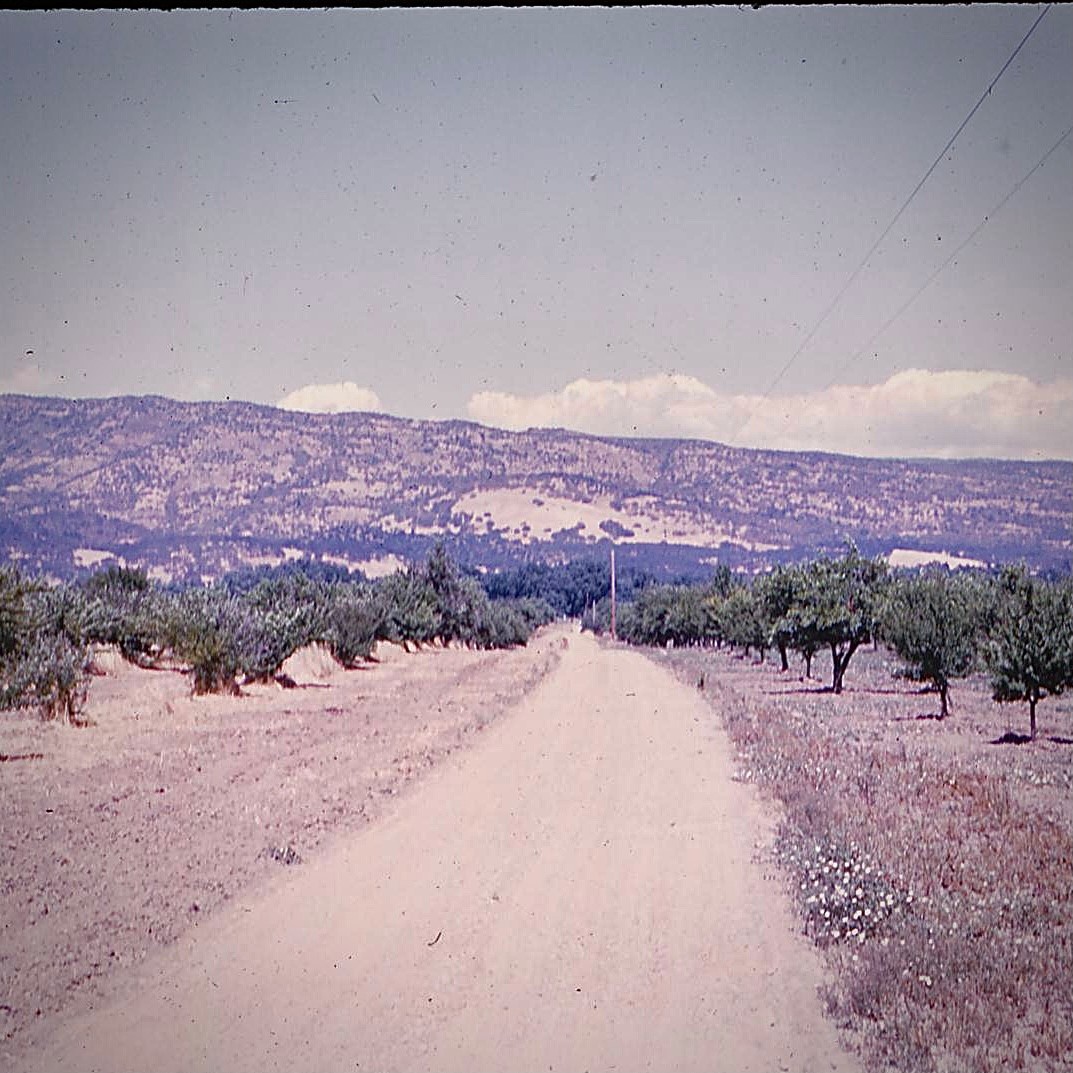
What pop saw in 1969 that made him think his dreams of growing world class Pinot Noir and Chardonnay in Napa Valley could be realized.
Around 1969, he came across an old prune orchard for sale in the southern end of Napa Valley, now known as the Oak Knoll District. It was a dry, dusty old prune orchard, but he had vision and a plan, and he could see not just what it was, but what it could be. This old prune orchard was about as far south in Napa Valley as anyone would consider planting winegrapes in 1969. Cerneros and Coombsville were not yet established as winegrowing regions. He wanted to be in the souther end of the valley, because it was cooler, enjoyed the daily breezes from the bay, and gave him the best opportunity to grow world class Pinot Noir and Chardonnay in Napa Valley. The property was situated next to the river, which was appealing as well. In the early years, we grew Pinot Noir, Chardonnay, Sauvignon Blanc, Chenin Blanc and Gewurtraminer on the estate. All of the Cabernet Sauvignon back then was grown upvalley in St. Helena, Rutherford, Spring Mountain, Yountville.
Dear Ol' Dad ... although not so old, sometime around 1970ish.
Our varietal plantings have shifted over the course of 50 years, we now grow Cabernet Sauvignon, Cabernet Franc and Merlot on our vineyards in Oak Knoll District. We don't have any Sauvignon Blanc, Chenin Blanc or Gewurztraminer planted, but I would certainly love to put in a few rows of each on our next planting cycle! Being true to Dear Ol' Dad, we still grow a pretty good amount of Pinot Noir and Chardonnay on the estate. We have multiple clones of each in different blocks, and bottle a small amount of isolated block and clonal offerings each vintage, for example our Corley Chardonnay 'Block 1, Clone 96', or our Corley Pinot Noir 'Block 2, Clone 777'. When people politely ask why we're growing Pinot Noir and Chardonnay in 'Cab Country' ... well, some things matter more than others, and our dad's vision is one of those things. Cheers to Dear Ol' Dad on this Throwback Thursday!
If you'd like to enjoy a glass of our single vineyard, single block, single clone offerings, please call us at (707) 253-2802, or visit us at www.corleyfamilynapavalley.com
10 Years Later ... Looking Back on 2011 'Tietjen' Single Vineyard Cabernet Sauvignon
It's always enlightening to look back and see where we've been, in life and in winegrowing. We're fortunate as family winegrowers that we've been able to work with the same vineyards across Napa Valley for decades. It allows for a perspective of a single vineyard over a long period of time. We've worked with the same five vineyards, that span almost the length of Napa Valley, for most of the last 50 years. Working with a vineyard year in and year out provides perspective, as we inevitably will have better and worse vintages than others.
The 2011 vintage was one that stood out this millenium. It was a challenging growing season, in large part due to untimely rains close to harvest. This had many winegrowers working a little harder that season than usual. The vintage took a little of bit from the media at the time, and while it was indeed a difficult vintage, I think it was painted with too broad a critical stroke.
At Monticello, we like to focus on destination, not navigation. In 2011, our destination remained the same ... to make wonderful wines. That vintage made the path a little more difficult to navigate, but we embrace the journey! In winemaking, as in life, sometimes removing the negatives is the first step towards finding the positives. This was certainly the case in 2011. We sorted the fruit in the vineyard, we sorted the clusters on the crush pad, we sorted the grapes after they were destemmed. After we were done sorting, we sorted some more! All sorts of sorting! Removing the negatives to get to the positive core, which was the clean ripe, plump berries within the clusters.
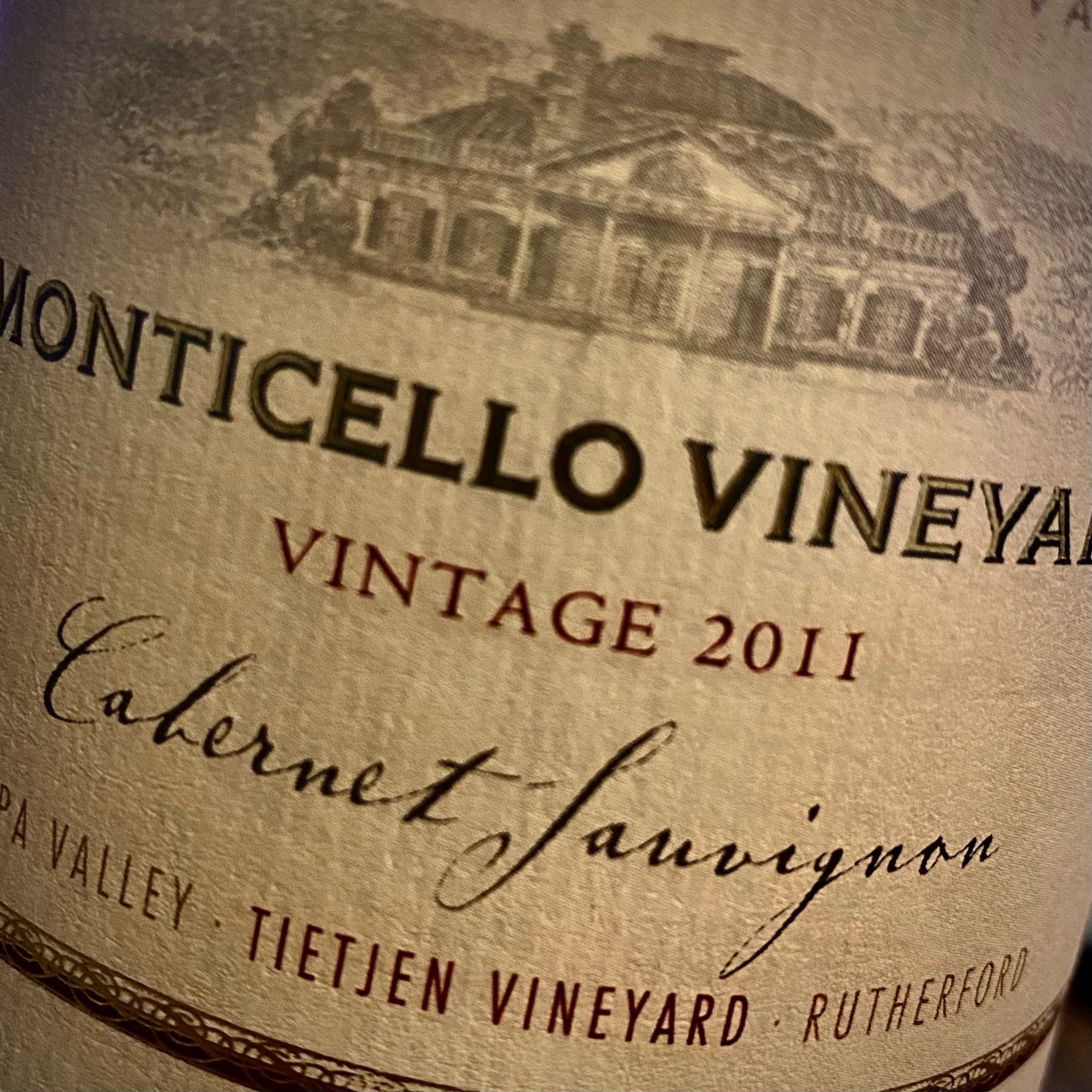
We've been enjoying a lot of the wines from 2011 this year, as it's fun to look back 10 years to see how the wines are doing, especially with our single vineyard Cabernet Sauvignon bottlings. Over the last month or so, we've been enjoying a fair bit of the 2011 Tietjen Vineyard Cabernet Sauvignon. This vineyard is on Niebaum Lane in Rutherford, and has been hallmark single vineyard bottling for us for decades. At ten years, and with about 30 minutes in a decanter, this wine is singing! The aromas are deep, with blackberry, plum and a nice beam of vanillin oak in the background. On the palate, the wine is smooth as silk, as the tannins have evolved wonderfully over the last 10 years.
We've always been very good about setting aside some wines, and we do have some of the Tietjen Vineyard Cabernet Sauvignon 2011 still available. If you're interested in trying this wonderful vineyard at 10 years, please call us at the winery (707) 253-2802, or check in with us online at www.corleyfamilynapavalley.com/wines
California Sprawl
When we were kids, I used to love going to the vineyard with our dad. With the winery under construction, and the young vineyards in their resplendent California Sprawl, it was an exciting time for the 'grown-ups', and a fun place for us kids. I was 10 years old when the winery was built, and wine and grapes didn't mean much to me at that time, although I had a great admiration for our dad ... he was a builder, visionary, and creator, and even my young eyes could see and appreciate that.
The land had been cleared of the old prune trees and black walnut trees back in 1970, and the vineyard was established and thriving. I think I recall hearing when I was young that the largest black walnut tree in California was just a little north of us, a bit further up Big Ranch Road. Big Ranch Road was a fairly quiet country lane back then, and our dad knew all the neighbors up and down the road, and by extension, so did we.
Back then, vineyards didn't look like they do now. They used to grow more wildly, in what was known as 'California Sprawl'. The spacing between vines was much broader, sometimes planted 8' x 12' apart. The tractors were big, and the valley bins that the grapes were picked into were also big, holding 2+ tons of grapes each, and they were usually tipped into a big grape hopper off of the back of a flatbed. It was very different than the typical vineyard in Napa Valley now, which is usually highly manicured, with much more fruit exposure, and a wall of leaves rather than a true canopy.
As a kid roaming around in the vineyard back then, it was fun hanging out under a California Sprawl. Since the vines were spaced so far apart and planted on pretty aggressive rootstocks, the vines would grow very aggressively, the shoots growing thick and strong across the wide rows, their tendrils ensnaring each other and creating a true canopy that you would go under. In the old days, you need to fight your way through the vineyard rows sometimes. The grapes were entirely underneath the canopy, with little to no actual sun exposure.
Over the years, viticulture has progressed towards tighter spacing in vineyards, smaller tractors, increasingly manicured vines, greatly increased fruit exposure. This all lends itself towards clean, wonderfully ripe California wines, which we love. I wonder, though, as we observe naturally increasing heat and less rain, if we might see a slight shift back towards more natural canopies to protect our fruit from the sun. We can see many vineyards protecting their fruit from the sun by hanging shadecloth over the grapes, but I remember seeing the old growers on our vineyard accomplish that with training and vine leaves.
As we celebrate fifty years of winegrowing in the Napa Valley, we are looking forward, but it is fun to reminisce about being a kid, hanging out under the sprawling grapevines 40 years ago.
CORLEY | St. Croix Sheep
Julianna and I have enjoyed raising St. Croix Sheep for the last five years at our previous place up on Spring Mountain. They're an easy-going breed, and they adapted easily to life on the mountain. This is notable considering they originate from the US Virgin Island, specifically from the island of St. Croix, hence the name. They are 'hair sheep' which is appealing to us, because it means there is no shearing involved.
This past fall, we moved all the sheep down to Monticello Vineyard on the valley floor in Oak Knoll District. Easily adaptable, they have quickly enjoyed mulling around in the blocks behind the winery. St. Croix are generally comfortable around people, and their comfort level around our Anatolian Shepherd guard dogs is pretty good as well.
Now that we're starting to have some nice grass and mustard greens coming up in the fallow fields, the sheep couldn't be happier! This year, we'll move the sheep between two of our fallow fields, and have them eat all of the greenery and recycle it back into the soil.
Each spring, we can see their Caribbean roots on display as their winter hair starts to turn to dreadlocks and fall off for the upcoming summer! We just have small herd of ten right now, enough for baseball, but we can't quite field a football team. In the meantime, they just work on eating weeds and staying in shape. St. Croix ewes tend to be about 150 lbs fully mature, and the rams can grow to about 200 lbs. The rams don't have horns, but there are other easy identifiers, especially if you're standing behind them. One of the great experiences is when the lambs are born. Maybe we've been lucky, but our sheep have been very self-sufficient at birth, and to see a lamb being born and walking, albeit clumsily, 10 minutes later is really amazing.
Our Corley Family St. Croix Sheep are very happy here in the fields, and as time goes on and the small herd grows, we hope to expand our offerings perhaps with estate grown farm-to-table wine dinners. Lambs finish with a minimal amount of fat and have a small bone to fat ratio. The meat is lean and without the tallow taste, as well as naturally low in cholesterol. Flavor and aroma is mild. Generally St. Croix meat is judged as having good flavor, juiciness, and tenderness.
Our CORLEY Proprietary Red Wine, an 'Estate Grown' blend of Cabernet Sauvignon, Cabernet Franc and Merlot would be a good pairing, as would our MONTICELLO 'Estate Grown' Syrah. For more information on these wines, please visit /wines
In Memoriam : Jay Corley, 1931-2016
Jay Corley, a Napa Valley standard-bearer for nearly 50 years and founder of Monticello Vineyards, passed away on January 11, 2016 in Napa, surrounded by family. The causes were complications from cancer. He was 84 years old.
Jay was born on July 30, 1931 in Chicago, to John and Helen Corley. After graduating from Cranbrook high school in Detroit, Jay moved west to attend Arizona State and Stanford University. He later attended Pepperdine, where he received his MBA. His thesis was based on how to start a vineyard and winery business in the Napa Valley. Jay's interest in culture and languages also led him to serve as an Italian linguist with the NSA.
An entrepreneur at his core, Jay founded and managed a number of successful business ventures in Southern California in the 1960s. His family's long history of farming was always on his mind, and he felt himself drawn towards the reemerging wine regions in Northern California. When the post-prohibition reincarnation of Napa Valley's winegrowing industry began to germinate in the 1960s, Jay was quick to recognize the region's potential for growing world-class wine, and he made the decision to move north and follow his dream.
He established his vineyard in 1969 in the cooler southern end of the Napa Valley, now known as the Oak Knoll District. When he first surveyed his land, he stood in a tired and gnarly prune orchard peppered with black walnut trees, but what he saw was a world-class vineyard with the potential to make classic wines. In 1981, after more than a decade of growing and selling his grapes to other wineries, he built the winery at Monticello Vineyards and began to produce his own estate-grown wines. Jay took great pride that the winery he founded has entered into its second generation, with its third generation showing early interest in the family wine business.

Jay nurtured a strong sense of civic duty, and served on several boards and foundations, including Queen of the Valley Hospital and Napa Valley Planning Commission. He served twice as Chairman of the Napa Valley Wine Auction, served on the Napa Valley Grand Jury, and was longtime and active member of Napa Rotary. He enjoyed his affiliations with the Chevalier du Tastevin, and with his fellow GONADS (The Gastronomical Order for Nonsensical and Dissipatory Society), a group of fun-loving yet dedicated friends and fellow Napa Valley wine industry pioneers.
Jay was a life-long and devoted Chicago Cubs fan, rooting for his beloved Cubbies since he was a kid at Wrigley Field in the 1930s. Jay also cheered for the Stanford Cardinal, and loved to spend weekends tailgating at the eucalyptus grove at Stanford stadium, and cheering on his alma mater from the old wooden benches.
He had a wonderful sense of humor, and would light up a room with his smile and wit. His love of swing music lifted the spirits, and was frequently playing in the background. He was a well-traveled man, familiar with international cultures, yet was most comfortable at home with family.
PRESS ON!
Nothing in the world can take the place of Persistence. Talent will not; nothing is more common than unsuccessful men with talent. Genius will not; unrewarded genius is almost a proverb. Education will not; the world is full of educated derelicts. Persistence and determination alone are omnipotent. The slogan 'Press On' has solved and always will solve the problems of the human race.
- Calvin Coolidge
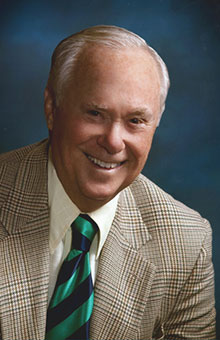
In(ter)dependence Day
In past years, I've posted the full text of The Declaration of Independence on July 4, 2020. For broader perspective, this year I'd like to also include an excerpt from freed slave Frederick Douglass' address to Congress on July 5, 1852. For context, Douglass' speech was given 26 years after the death of Thomas Jefferson (1826), and 9 years beofre the start of the American Civil War.
Declaration of Independence - Thomas Jefferson. July 4, 1776.
The unanimous Declaration of the thirteen united States of America, When in the Course of human events, it becomes necessary for one people to dissolve the political bands which have connected them with another, and to assume among the powers of the earth, the separate and equal station to which the Laws of Nature and of Nature's God entitle them, a decent respect to the opinions of mankind requires that they should declare the causes which impel them to the separation.
We hold these truths to be self-evident, that all men are created equal, that they are endowed by their Creator with certain unalienable Rights, that among these are Life, Liberty and the pursuit of Happiness.--That to secure these rights, Governments are instituted among Men, deriving their just powers from the consent of the governed, --That whenever any Form of Government becomes destructive of these ends, it is the Right of the People to alter or to abolish it, and to institute new Government, laying its foundation on such principles and organizing its powers in such form, as to them shall seem most likely to effect their Safety and Happiness. Prudence, indeed, will dictate that Governments long established should not be changed for light and transient causes; and accordingly all experience hath shewn, that mankind are more disposed to suffer, while evils are sufferable, than to right themselves by abolishing the forms to which they are accustomed. But when a long train of abuses and usurpations, pursuing invariably the same Object evinces a design to reduce them under absolute Despotism, it is their right, it is their duty, to throw off such Government, and to provide new Guards for their future security.--Such has been the patient sufferance of these Colonies; and such is now the necessity which constrains them to alter their former Systems of Government. The history of the present King of Great Britain is a history of repeated injuries and usurpations, all having in direct object the establishment of an absolute Tyranny over these States. To prove this, let Facts be submitted to a candid world.
He has refused his Assent to Laws, the most wholesome and necessary for the public good.
He has forbidden his Governors to pass Laws of immediate and pressing importance, unless suspended in their operation till his Assent should be obtained; and when so suspended, he has utterly neglected to attend to them.
He has refused to pass other Laws for the accommodation of large districts of people, unless those people would relinquish the right of Representation in the Legislature, a right inestimable to them and formidable to tyrants only.
He has called together legislative bodies at places unusual, uncomfortable, and distant from the depository of their public Records, for the sole purpose of fatiguing them into compliance with his measures.
He has dissolved Representative Houses repeatedly, for opposing with manly firmness his invasions on the rights of the people.
He has refused for a long time, after such dissolutions, to cause others to be elected; whereby the Legislative powers, incapable of Annihilation, have returned to the People at large for their exercise; the State remaining in the mean time exposed to all the dangers of invasion from without, and convulsions within.
He has endeavoured to prevent the population of these States; for that purpose obstructing the Laws for Naturalization of Foreigners; refusing to pass others to encourage their migrations hither, and raising the conditions of new Appropriations of Lands.
He has obstructed the Administration of Justice, by refusing his Assent to Laws for establishing Judiciary powers.
He has made Judges dependent on his Will alone, for the tenure of their offices, and the amount and payment of their salaries.
He has erected a multitude of New Offices, and sent hither swarms of Officers to harrass our people, and eat out their substance.
He has kept among us, in times of peace, Standing Armies without the Consent of our legislatures.
He has affected to render the Military independent of and superior to the Civil power.
He has combined with others to subject us to a jurisdiction foreign to our constitution, and unacknowledged by our laws; giving his Assent to their Acts of pretended Legislation:
For Quartering large bodies of armed troops among us:
For protecting them, by a mock Trial, from punishment for any Murders which they should commit on the Inhabitants of these States:
For cutting off our Trade with all parts of the world:
For imposing Taxes on us without our Consent:
For depriving us in many cases, of the benefits of Trial by Jury:
For transporting us beyond Seas to be tried for pretended offences
For abolishing the free System of English Laws in a neighbouring Province, establishing therein an Arbitrary government, and enlarging its Boundaries so as to render it at once an example and fit instrument for introducing the same absolute rule into these Colonies:
For taking away our Charters, abolishing our most valuable Laws, and altering fundamentally the Forms of our Governments:
For suspending our own Legislatures, and declaring themselves invested with power to legislate for us in all cases whatsoever.
He has abdicated Government here, by declaring us out of his Protection and waging War against us.
He has plundered our seas, ravaged our Coasts, burnt our towns, and destroyed the lives of our people.
He is at this time transporting large Armies of foreign Mercenaries to compleat the works of death, desolation and tyranny, already begun with circumstances of Cruelty & perfidy scarcely paralleled in the most barbarous ages, and totally unworthy the Head of a civilized nation.
He has constrained our fellow Citizens taken Captive on the high Seas to bear Arms against their Country, to become the executioners of their friends and Brethren, or to fall themselves by their Hands.
He has excited domestic insurrections amongst us, and has endeavoured to bring on the inhabitants of our frontiers, the merciless Indian Savages, whose known rule of warfare, is an undistinguished destruction of all ages, sexes and conditions.
In every stage of these Oppressions We have Petitioned for Redress in the most humble terms: Our repeated Petitions have been answered only by repeated injury. A Prince whose character is thus marked by every act which may define a Tyrant, is unfit to be the ruler of a free people.
Nor have We been wanting in attentions to our Brittish brethren. We have warned them from time to time of attempts by their legislature to extend an unwarrantable jurisdiction over us. We have reminded them of the circumstances of our emigration and settlement here. We have appealed to their native justice and magnanimity, and we have conjured them by the ties of our common kindred to disavow these usurpations, which, would inevitably interrupt our connections and correspondence. They too have been deaf to the voice of justice and of consanguinity. We must, therefore, acquiesce in the necessity, which denounces our Separation, and hold them, as we hold the rest of mankind, Enemies in War, in Peace Friends.
We, therefore, the Representatives of the united States of America, in General Congress, Assembled, appealing to the Supreme Judge of the world for the rectitude of our intentions, do, in the Name, and by Authority of the good People of these Colonies, solemnly publish and declare, That these United Colonies are, and of Right ought to be Free and Independent States; that they are Absolved from all Allegiance to the British Crown, and that all political connection between them and the State of Great Britain, is and ought to be totally dissolved; and that as Free and Independent States, they have full Power to levy War, conclude Peace, contract Alliances, establish Commerce, and to do all other Acts and Things which Independent States may of right do. And for the support of this Declaration, with a firm reliance on the protection of divine Providence, we mutually pledge to each other our Lives, our Fortunes and our sacred Honor.
What to the Slave is the Fourth of July? (An Excerpt) - Freed Slave Frederick Douglass' Speech to The President and Congress. July 5, 1852.
What, to the American slave, is your 4th of July? I answer: a day that reveals to him, more than all other days in the year, the gross injustice and cruelty to which he is the constant victim. To him, your celebration is a sham; your boasted liberty, an unholy license; your national greatness, swelling vanity; your sounds of rejoicing are empty and heartless; your denunciations of tyrants, brass fronted impudence; your shouts of liberty and equality, hollow mockery; your prayers and hymns, your sermons and thanksgivings, with all your religious parade, and solemnity, are, to him, mere bombast, fraud, deception, impiety, and hypocrisy — a thin veil to cover up crimes which would disgrace a nation of savages. There is not a nation on the earth guilty of practices, more shocking and bloody, than are the people of these United States, at this very hour.
Check Out our Library Wines! Corley 'Proprietary' Red Wine 2005-2007
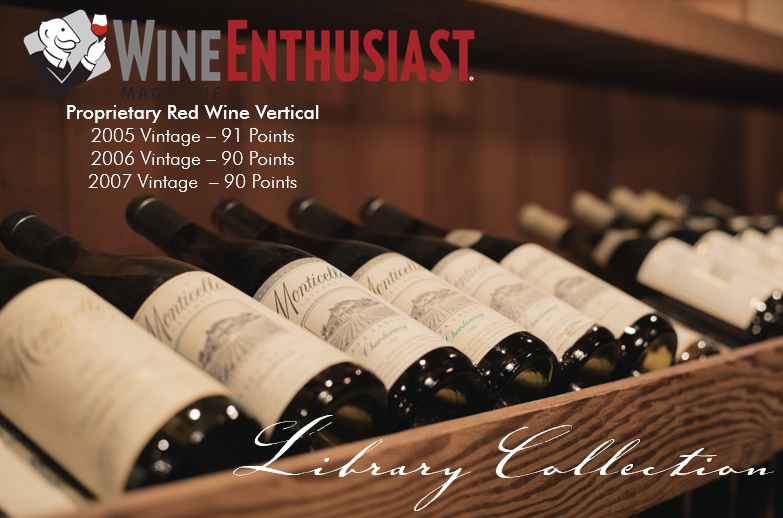
Memorial Day
Today is Memorial Day. Today is also National Wine Day.
Normally, we would be happy to celebrate National Wine Day. However this year, with the two days coinciding, we choose to honor the men and women of the armed services who have given everything defending our liberties and our values.
We salute you, honor you, and thank you.
Today, we would like to share with you the Memorial Day address given by Woodrow Wilson, the 28th President of the United States, on May 30, 1914
May 30, 1914
I have not come here to-day with a prepared address. The committee in charge of the exercises of the day have graciously excused me on the grounds of public obligations from preparing such an address, but I will not deny myself the privilege of joining with you in an expression of gratitude and admiration for the men who perished for the sake of the Union. They do not need our praise. They do not need that our admiration should sustain them. There is no immortality that is safer than theirs. We come not for their sakes but for our own, in order that we may drink at the same springs of inspiration from which they themselves selves drank.
A peculiar privilege came to the men who fought for the Union. There is no other civil war in history, ladies and gentlemen, the stings of which were removed before the men who did the fighting passed from the stage of life. So that we owe these men something more than a legal reëstablishment of the Union. We owe them the spiritual reëstablishment of the Union as well; for they not only reunited States, they reunited the spirits of men. That is their unique achievement, unexampled anywhere else in the annals of mankind, that the very men whom they overcame in battle join in praise and gratitude that the Union was saved. There is something peculiarly beautiful and peculiarly touching about that. Whenever a man who is still trying to devote himself to the service of the Nation comes into a presence like this, or into a place like this, his spirit must be peculiarly moved. A mandate is laid upon him which seems to speak from the very graves themselves. Those who serve this Nation, whether in peace or in war, should serve it without thought of themselves. I can never speak in praise of war, ladies and gentlemen; you would not desire me to do so. But there is this peculiar distinction belonging to the soldier, that he goes into an enterprise out of which he himself cannot get anything at all. He is giving everything that he hath, even his life, in order that others may live, not in order that he himself may obtain gain and prosperity. And just so soon as the tasks of peace are performed in the same spirit of self-sacrifice and devotion, peace societies will not be necessary. The very organization and spirit of society will be a guaranty of peace.
Therefore this peculiar thing comes about, that we can stand here and praise the memory of these soldiers in the interest of peace. They set us the example of self-sacrifice, which if followed in peace will make it unnecessary that men should follow war any more.
We are reputed to be somewhat careless in our discrimination between words in the use of the English language, and yet it is interesting to note that there are some words about which we are very careful. We bestow the adjective "great" somewhat indiscriminately. A man who has made conquest of his fellow-men for his own gain may display such genius in war, such uncommon qualities of organization and leadership that we may call him "great," but there is a word which we reserve for men of another kind and about which we are very careful; that is the word "noble." We never call a man "noble" who serves only himself; and if you will look about through all the nations of the world upon the statues that men have erected—upon the inscribed tablets where they have wished to keep alive the memory of the citizens whom they desire most to honor—you will find that almost without exception they have erected the statue to those who had a splendid surplus of energy and devotion to spend upon their fellow-men. Nobility exists in America without patent. We have no House of Lords, but we have a house of fame to which we elevate those who are the noble men of our race, who, forgetful of themselves, study and serve the public interest, who have the courage to face any number and any kind of adversary, to speak what in their hearts they believe to be the truth.
We admire physical courage, but we admire above all things else moral courage. I believe that soldiers will bear me out in saying that both come in time of battle. I take it that the moral courage comes in going into the battle, and the physical courage in staying in. There are battles which are just as hard to go into and just as hard to stay in as the battles of arms, and if the man will but stay and think never of himself there will come a time of grateful recollection when men will speak of him not only with admiration but with that which goes deeper, with affection and with reverence.
So that this flag calls upon us daily for service, and the more quiet and self-denying the service the greater the glory of the flag. We are dedicated to freedom, and that freedom means the freedom of the human spirit. All free spirits ought to congregate on an occasion like this to do homage to the greatness of America as illustrated by the greatness of her sons.
It has been a privilege, ladies and gentlemen, to come and say these simple words, which I am sure are merely putting your thought into language. I thank you for the opportunity to lay this little wreath of mine upon these consecrated graves.
